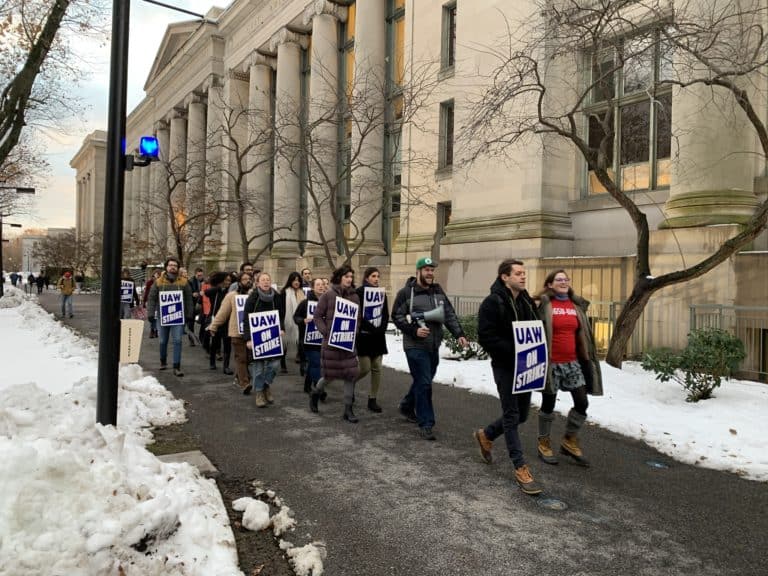
Noah Zatz is Professor of Law at the University of California, Los Angeles.
This is the final post in a three-part series.
This is the last in a series of three posts on the prominent perverse consequences argument against “Banning the Box.” The argument is that efforts to curtail employer exclusion of people with criminal records inadvertently exacerbate the racial inequality they purport to redress. The first post argued that Ban the Box should not be blamed for an effect rooted in employers’ racial stereotyping; the second criticized the perverse consequences argument for using the wrong conception of racial equality. This one criticizes it for ignoring cumulative effects when identifying and comparing racial harm.
Before continuing, here is a quick review (more details in the first post). The perverse consequences argument builds on empirical studies that find, counter-intuitively, that limiting employers’ ability to check criminal records may decrease overall hiring of people of color. This surprising result arises because record checking has opposite effects on two different sub-groups of people are color: those with records are screened out more systematically, but those without records are hired more often. The former effect arises from racial disparities in the criminal justice system. The latter effect arises from racial stereotypes about criminality that employers apply when they lack individualized information. Because the stereotyping effect is larger than the criminal justice disparities effect, in aggregate criminal record checks lead employers to hire more people of color. Vice versa, banning the box costs jobs on net. The perverse consequences argument concludes that banning the box undermines racial justice, contrary to its proponents’ aspirations.
Like my first two critiques, this one relies on decomposing the racial implications of banning the box into two distinct phenomena: racial discrimination suffered, on the one hand, by someone denied employment because a racially biased criminal justice system stamped him with a scarlet letter, and , on the other, by someone denied employment because an employer falsely attributed criminality to him because of his race. My point in this post is that those experiences are distinct not only because they occur to different individuals but also because they have different dynamics over time.
The basic intuition is this: individuals with criminal records face permanent exclusion from employment when employers systematically check records and exclude those who have them. They will face exclusion over and over again. In contrast, individuals without criminal records who face racial stereotyping will experience harm that is real and serious, but less consistent. One employer will discriminate against them but the next one may not. The first form of discrimination will be narrow and deep; the second will be broader but also shallower.
To put the point more abstractly, imagine two different labor markets. In one, 20% of workers of color are permanently excluded from all jobs. Each employer excludes the same 20%. In the other labor market, 20% of workers of color are randomly excluded from each job. But it is a different 20% at each employer. If we measure racial discrimination by looking at the rate at which each employer hires people of color, as the studies underlying the perverse consequences argument do, then these two scenarios will look exactly the same. But are we really indifferent between them as a policy matter? It is the difference between 20% of the population being permanently unemployed and the entire population being unemployed 20% of the time.
There is a strong argument that the permanent exclusion of a sub-class is a deeper injustice than a rotating exclusion distributed throughout the class. The former is what Joey Fishkin has termed a “bottleneck,” which he argues should be a preeminent concern for anti-discrimination law. Moreover, there are important empirical questions about the dynamic effects of such bottlenecks. Even if, initially, the two patterns result in the same aggregate employment levels, the same might not be true over time.
My point is not that this bottleneck effect decisively defeats the perverse consequences argument. It raises difficult normative questions about how to compare different patterns of racial harm, and it raises unanswered empirical questions about how workers experience iterative encounters with multiple employers and how those experiences aggregate and evolve over time. More modestly, then, the point is that many open questions lie between the existing empirical findings and the policy conclusions drawn by the perverse consequences argument.
For supporters of Ban the Box, it is tempting to rebut the perverse consequences critique by disputing or disbelieving the social science. Ironically, that cedes too much power to the social scientists. Of course, the empirics could well be wrong. But their accuracy would not provide a racial justice license, let alone an endorsement, for criminal record screening. To the contrary, it would provide a stark reminder of just how pervasive, and multifaceted, racial discrimination remains and of how high the stakes can be in subtle disagreements over what constitutes discrimination in the first place.






Daily News & Commentary
Start your day with our roundup of the latest labor developments. See all
November 28
Lawsuit against EEOC for failure to investigate disparate-impact claims dismissed; DHS to end TPS for Haiti; Appeal of Cemex decision in Ninth Circuit may soon resume
November 27
Amazon wins preliminary injunction against New York’s private sector bargaining law; ALJs resume decisions; and the CFPB intends to make unilateral changes without bargaining.
November 26
In today’s news and commentary, NLRB lawyers urge the 3rd Circuit to follow recent district court cases that declined to enjoin Board proceedings; the percentage of unemployed Americans with a college degree reaches its highest level since tracking began in 1992; and a member of the House proposes a bill that would require secret ballot […]
November 25
In today’s news and commentary, OSHA fines Taylor Foods, Santa Fe raises their living wage, and a date is set for a Senate committee to consider Trump’s NLRB nominee. OSHA has issued an approximately $1.1 million dollar fine to Taylor Farms New Jersey, a subsidiary of Taylor Fresh Foods, after identifying repeated and serious safety […]
November 24
Labor leaders criticize tariffs; White House cancels jobs report; and student organizers launch chaperone program for noncitizens.
November 23
Workers at the Southeastern Pennsylvania Transportation Authority vote to authorize a strike; Washington State legislators consider a bill empowering public employees to bargain over workplace AI implementation; and University of California workers engage in a two-day strike.